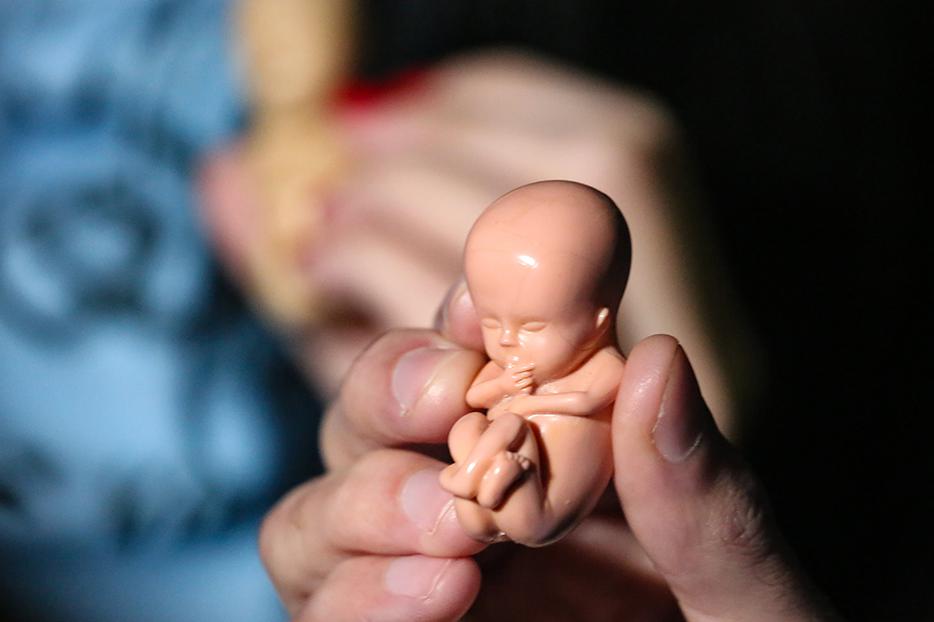A Prophecy Buried in a 50-Year-Old Medical Journal
The 1970 editorial admitted forthrightly that “everyone really knows” when life begins and that “semantic gymnastics” would be necessary to avoid that fact.

Fifty years ago this month, California Medicine, a professional journal for Golden State doctors, published a remarkably prophetic editorial, “A New Ethic for Medicine and Society.”
Three years before Roe v. Wade, efforts to legalize abortion had reached their zenith. California had broadened the grounds for abortion in 1967. In May 1970, New York adopted what was — to date — the most permissive American abortion law, allowing abortion-on-demand through the sixth month (24 weeks) of pregnancy. It’s true that New York’s law was the crest in the juggernaut to achieve abortion legalization in state legislatures — from 1970-73, pro-lifers stymied the effort, winning victories in state legislatures and referenda — but someone writing in the summer of ’70 could not know that. In any event, those achievements would be inundated within three years, when the Supreme Court imposed abortion-on-demand throughout all nine months of pregnancy on every state.
In many ways, the California Medicine editorialist foresees St. John Paul II’s contrast of a “culture of life” and a “culture of death” articulated 25 years later in the 1995 encyclical, Evangelium vitae. The California Medicine editorial already anticipated the problem in its title, “A New Ethic.”
As the editorial presents it, two distinct ethics are in competition, not just for medical but — perhaps more importantly — for larger social acceptance. The prevailing ethic, a “sanctity of life” ethic, affirmed “reverence for each and every human life” as the “keystone of Western medicine.” That ethic enjoyed “the blessing of the Judaeo-Christian heritage and has been the basis for most of our laws and much of our social policy.” It fostered an ethos within medicine that caused doctors “to try to preserve, protect, repair, prolong, and enhance every human life” that came under their professional care.
“Sanctity of life” was “still clearly dominant” but it was “being eroded at its core and may eventually even be abandoned.” Its competition is a “quality of life” ethic which, in contrast to the absolute value the “sanctity” ethic afforded to each and every human life, relativizes lives. Not all lives are created equal.
“The New Ethic” acknowledged several broader trends that promoted this trend. Technological progress made possible things that were never possible before. 1970 was the era of “Zero Population Growth” (the Ehrlichs’ Population Bomb was published two years earlier). Technological progress was also fostering a growing preoccupation with “quality of life” which, in the zero-sum game of zero population growth meant that more lives might threaten lifestyles to which “they are or would like to become accustomed.”
While the preceding may have created the intellectual climate for ethical change, California Medicine presciently recognized the issue that became the poster (anti)-child for the new ethic: abortion. “The process of eroding the old ethic and substituting the new has already begun. It may be seen most clearly in changing attitudes toward human abortion.”
In what is perhaps its most accurate diagnosis of what was going on, the 1970 editorial zeroed in on the elephant in the room:
Since the old ethic has not yet been fully displaced it has been necessary to separate the idea of abortion from the idea of killing, which continues to be socially abhorrent. The result has been a curious avoidance of the scientific fact, which everyone really knows, that human life begins at conception and is continuous whether intra- or extra-uterine until death. The very considerable semantic gymnastics which are required to rationalize abortion as anything but taking a human life would be ludicrous if they were not put forth under socially impeccable auspices. It is suggested that this schizophrenic sort of subterfuge is necessary because while the new ethic is being accepted the old one has not yet been rejected.
Fifty years later, can we imagine a mainstream journal — even a professional medical journal, admit forthrightly that “everyone really knows” when life begins and that the avoidance of that question involves “schizophrenic semantic gymnastics” that, if not put forth by elite opinion-makers and institutions that back them up with “raw judicial power,” would be dismissed as risible and ludicrous?
John Paul noted the progress of that “new ethic” 25 years ago when he warned about the encroachment of the “culture of death.” If one looks back at medical trends since that editorial, the mortal harvest of the “new ethic” is rather stark:
- Could the editorialist have imagined that, 50 years later, 63,000,000 American babies would be dead?
- Could he have imagined that the most developed countries in the world, which mostly all outlaw the death penalty, now deem prenatal capital punishment a “civil and human right?”
- Could he have imagined that, in some countries, physicians prostitute their profession by helping kill their patients — sometimes at their request, sometimes at the request of their family, sometimes by judging that continued care (including food and drink) is “futile?”
- Could he have imagined that, in some countries, even minors can ask their doctors to help kill them?
- Could he have imagined that, in some countries, a physician’s failure to prostitute his medical arts by refusing to participate in “medical assistance in dying” (another “semantic gymnastic”) would require him either to make a referral to a colleague who would or lose the ability to practice medicine?
- Could he have imagined that some professional associations would try to require participation in abortion as a necessary part of medical education, so that pro-life doctors are ferreted out of the obstetrics and gynecology specialization?
When Roe was decided, this editorial was frequently cited to criticize the doubletalk Harry Blackmun engaged in as pretend Constitutional adjudication. Over time, and with the ascent of the “new ethic” in bioethics (I recall Daniel Callahan of the Hastings Center once admitting that contemporary bioethics emerged not because there was a lack of medical ethics but because what was there was too tied to the Catholic “sanctity of life” tradition) the “new ethic” has thrust its tentacles ever deeper into medicine. There are still holdouts — the fact that many American doctors do not perform abortions attests to that — but the night is far spent and, as Edmund Burke reminded, evil triumphs when good men and women do nothing.
Fifty years later, please reread “A New Ethic for Medicine and Society.” And maybe even share a copy with your doctor.
- Keywords:
- abortion

















